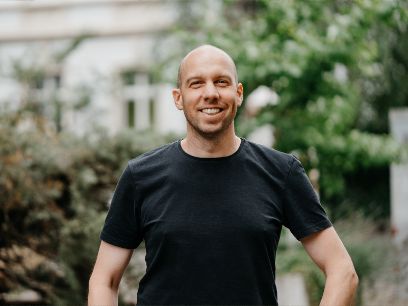- Story
The potential of urban spaces for biodiversity
28.08.2024 BFH and biodiversity: What potential is there in our housing developments? How can we plan our residential developments to ensure the creation of functioning ecosystems? And why is this so important? Daniel Baur, landscape architect and urban developer at BFH, provides answers.

Key points in brief
- Biodiversity exists wherever ecosystems are functional.
- With climate change comes the threat of ecological collapse.
- Our residential areas have the potential to be a refuge for intact ecosystems.
- This article is part of a series by Bern University of Applied Sciences that highlights its expertise on the topic as part of the Biodiversity Initiative.
“A neighbourhood has to work, both for people and for the ecosystem.”

With your company BRYUM, Office for Urban Interventions and Landscape Architecture, as well as in your lectures at BFH, you get to grips with the issue of biodiversity. What is meant by biodiversity in this context?
The term biodiversity is very well known and has positive associations, which is an advantage. However, it is often equated with species diversity and understood to mean that the more species present, the better the biodiversity. In urban planning, biodiversity often ends up meaning the requirement for predefined quantitative elements. For example, it can be mandatory for 10% of the green space to be planted with a wild hedge. But biodiversity is not defined by the number of species or by quantitative targets. Biodiversity exists when all elements of an ecosystem are interconnected and present to a sufficient degree. For me as a landscape architect, this means that I have to plan a neighbourhood as a habitat that works equally well for us humans as for plants and animals.
What significance does biodiversity have for you?
For me, biodiversity is at the core of the issues we face in the future. With the rapid pace of climate change, we’re currently seeing changes in temperature and precipitation. Our climate zone is shifting northwards. Since the ecosystems with their flora and fauna are directly linked to the climate, in theory they should also be able to migrate with it. However, it’s not possible at such a speed. The climate has pretty much run away from the native flora and fauna. In the (xerothermic) climate we’re now experiencing, some species don’t function and so are becoming extinct. As a result, ecosystems that have worked fine up to now are losing their ability to function. Until the ecosystems that are compatible with our new climate have migrated to us, there’s a risk of ecological collapse. But the good news is: our residential areas have the potential to act as a refuge for ecosystems that already function in warmer and drier climates. However, I believe this will only work if we think of ecosystems from a broader perspective than the individual construction project. This requires a fundamental rethink of urban development. The ecosystems of residential areas can contribute significantly to the resilience of the ‘natural landscape’ by producing species structures that have already adapted, thus revitalising or even replacing failing natural ecosystems.
“Planners should develop a new code of ethics and not simply build what is requested.”

What do we need to do for this rethink to take place?
The way I see it, the responsibility lies with my profession, the urban planners. I have no doubt that there are solutions. We’ve already proven that in the past. One example is the Hoffmann La-Roche campus in Kaiseraugst, which BRYUM completed in 2018. The client originally wanted a park with an English lawn and monocultural groves of trees. What we built was a functioning floodplain landscape in which people are integrated as part of the ecosystem. Finding solutions of this kind takes out-of-the-box thinking. You need broad, connected knowledge that transcends disciplinary boundaries. I believe that our profession needs to develop a new code of ethics and should not blindly implement what the client requests, but should instead actively contribute ideas and seek solutions that work. This would also include refusing to plan or build things like monotonous green spaces between buildings.
How do you prepare your students to tackle these new challenges?
The fact that, as a landscape architect, I run a design studio for re-use architecture as part of the architecture degree programme, signals to students that they need to think more broadly nowadays. In the old days, professors used to explain the world to students by teaching from the blackboard. Today, we need a different kind of lecture. I use questions and discussion to try to draw the students out of their habitual thought patterns and lead them into new ways of thinking. The most rewarding thing for me is when I manage to fire the students’ passion for an issue, and they take a stance on it. They call social patterns into question and want to find new solutions.
What patterns would you like to disrupt?
The urban planning dogma of green spaces between buildings. I’d like to get rid of the unused green spaces in residential developments. I don’t understand what use these areas have today. For the city of Bern, our office analysed areas of green space used to separate buildings and demonstrated the potential that these areas have for the use of open space. In the Stöckacker, Bümpliz and Bethlehem neighbourhoods alone, we found 42.5 hectares of monotonous, unused green space between buildings. 11,840 people could use this area as their personal open space, e.g. as leisure gardens. Or we could plant 10,600 trees and create a functioning ecosystem that promotes biodiversity, cools the city, stores CO2 and acts as a refuge for fauna and flora. In other words, there is huge potential for solutions that might not only lead to a better quality of life for residents, but also to greater biodiversity and a reduction in the complete loss of existing ecosystems.
